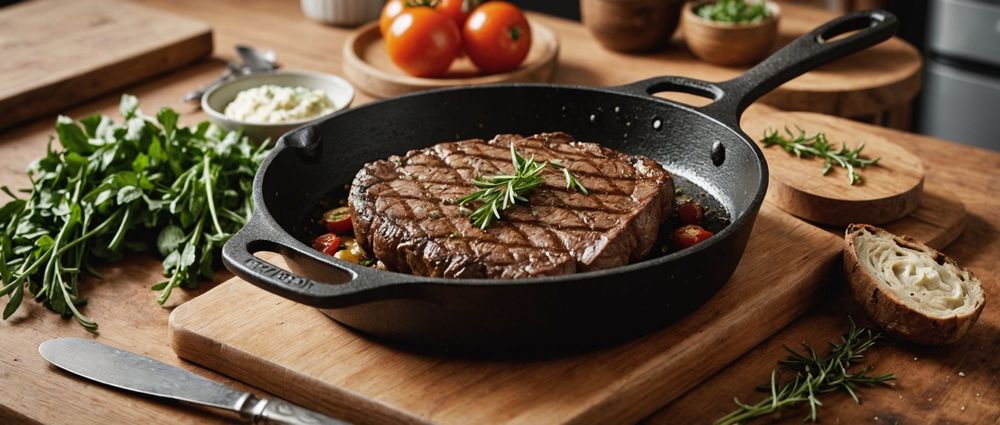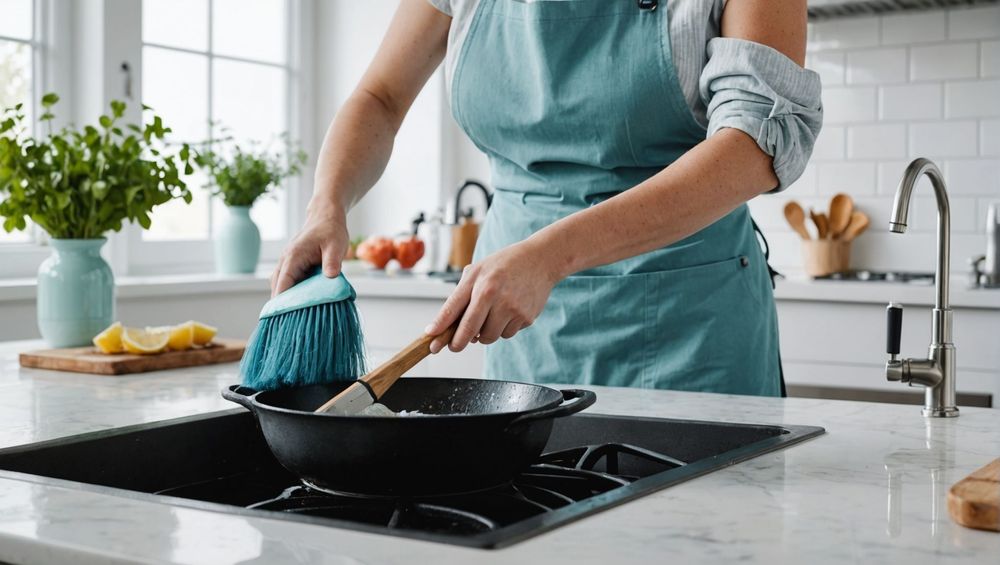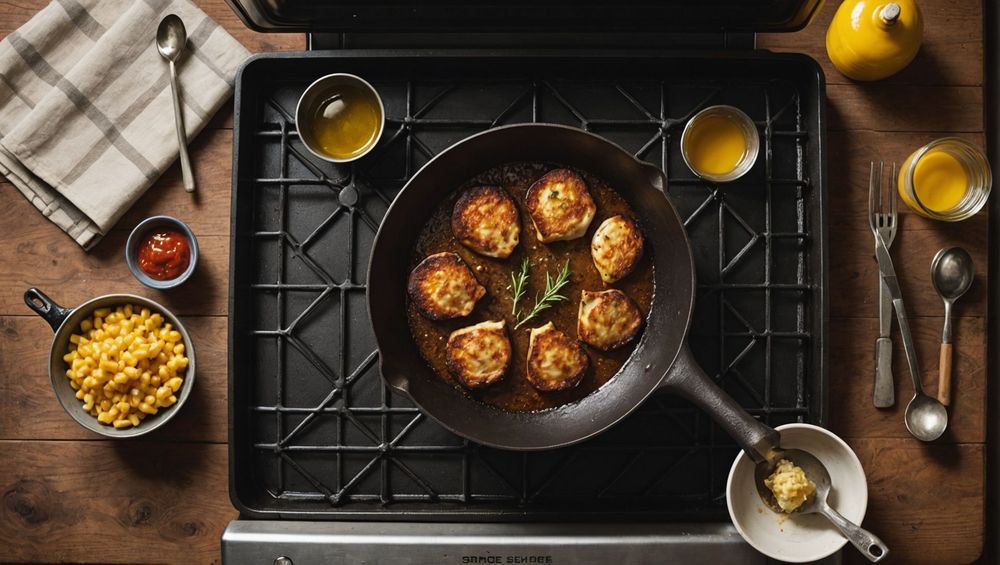Cleaning and re-seasoning a cast iron skillet is an essential process that ensures the longevity of this beloved kitchen staple. By properly maintaining your cast iron skillet, you can enhance its non-stick properties and prevent rust, allowing for better cooking experiences. Whether you have an heirloom cast iron skillet or a modern one, following the right steps will keep it in excellent shape for many years. In this article, we will explore the effective techniques for cleaning and re-seasoning your cast iron skillet, emphasizing the importance of care in preserving its quality.
Understanding the Importance of Cleaning Your Cast Iron Skillet

Cleaning a cast iron skillet goes beyond removing food residues; it is crucial for maintaining the skillet’s seasoning layer. This layer is a polymerized oil coating that protects the cast iron from moisture and rust. Without proper cleaning, leftover food particles and grease can lead to sticky surfaces and unpleasant flavors in your dishes. Here are a few more reasons why regular cleaning is vital:
-
Prevention of Rust:
Moisture can lead to rust formation on cast iron, which compromises its cooking surface. -
Enhanced Non-Stick Property:
A well-maintained skillet offers superior non-stick cooking capabilities. -
Avoiding Flavors Transfer:
Residues from previous meals can affect the taste of your current dish. -
Longevity:
Taking good care of your skillet will extend its life, potentially handing it down to future generations. -
Better Cooking Experience:
A clean skillet ensures even heat distribution for optimal cooking results.
Step-by-Step Guide to Clean Your Cast Iron Skillet

Cleaning your cast iron skillet involves specific steps to ensure you preserve the seasoning and avoid damage. Here’s how to do it properly:
-
Remove Food Residues:
Use a stiff brush or a non-metal scrub pad to remove stuck-on food. Avoid using soap, as it can strip away the seasoning. -
Rinse with Water:
Rinse the skillet under warm water while scrubbing gently. If there are stubborn bits, you can boil some water in the skillet for a few minutes to loosen them. -
Dry Immediately:
After rinsing, dry the skillet thoroughly with a clean kitchen towel or place it on low heat for a few minutes to evaporate any moisture. -
Apply Oil:
Once dry, apply a thin layer of cooking oil (like flaxseed or vegetable oil) to the inside of the skillet using a paper towel or cloth. -
Store Properly:
Store your cast iron skillet in a dry place. If stacking with other cookware, place a paper towel inside to absorb any moisture.
The Best Methods to Re-season Your Cast Iron Skillet
Re-seasoning a cast iron skillet is necessary when the skillet shows signs of wear, such as dullness or rust. Here’s how you can effectively re-season your skillet:
-
Clean Thoroughly:
Start by cleaning the skillet as detailed above to remove any food particles or old seasoning. -
Dry the Skillet:
Ensure it’s completely dry, as moisture can prevent the oil from adhering properly. -
Coat with Oil:
Apply a thin layer of your chosen oil over the entire surface of the pan, including the exterior and handle. -
Heat in the Oven:
Place the skillet upside down in a preheated oven (around 450°F or 232°C) for one hour. Put a baking sheet or aluminum foil beneath to catch any drips. -
Cool in the Oven:
After one hour, turn off the oven and allow the skillet to cool inside to avoid thermal shock.
Maintaining Your Cast Iron Skillet

Once your skillet is clean and seasoned, proper maintenance is crucial to ensure its longevity. Here are some tips to keep your cast iron skillet in prime condition:
-
Avoid Soaking:
Never soak your cast iron skillet in water for long periods, as this can cause rust. -
Avoid Soap:
Soap can strip seasoning. Instead, use hot water and a stiff brush for cleaning. -
Re-season Regularly:
Re-season your skillet every few months or whenever you notice deterioration in its surface. -
Cook with Fats:
Cooking with oils, butters, or animal fats can help maintain the seasoning layer. -
Keep It Dry:
Always ensure your skillet is completely dry before storing it.
Conclusion
Cleaning and re-seasoning a cast iron skillet may seem intimidating at first, but with these simple steps, you can easily maintain this kitchen treasure for generations. Following proper techniques ensures not just a cleaner pan but also enhances cooking performance and flavor. Regular maintenance will allow you to enjoy the unique benefits of a cast iron skillet, from its ability to retain heat to its unmatched non-stick qualities. Invest time in caring for your skillet, and it will reward you with delicious meals and precious memories.
Часто задаваемые вопросы
1. Can I use soap to clean my cast iron skillet?
It is best to avoid soap as it can strip the seasoning. Use hot water and a brush for cleaning instead.
2. How often should I re-season my skillet?
You should re-season your skillet whenever you notice dullness, rust, or a sticky surface. This varies but generally is every few months.
3. Is it safe to cook acidic foods in a cast iron skillet?
Cooking acidic foods, like tomatoes, can damage the seasoning layer if done excessively. It is best to use cast iron for acidic foods occasionally.
4. How can I remove rust from my skillet?
To remove rust, scrub the affected areas with steel wool until the rust is gone, then re-season the skillet after cleaning.
5. Can I leave my cast iron skillet in the oven?
Yes, you can leave your cast iron skillet in the oven, but ensure it is dry and properly seasoned. However, avoid exposing it to sudden temperature changes to prevent cracking.
